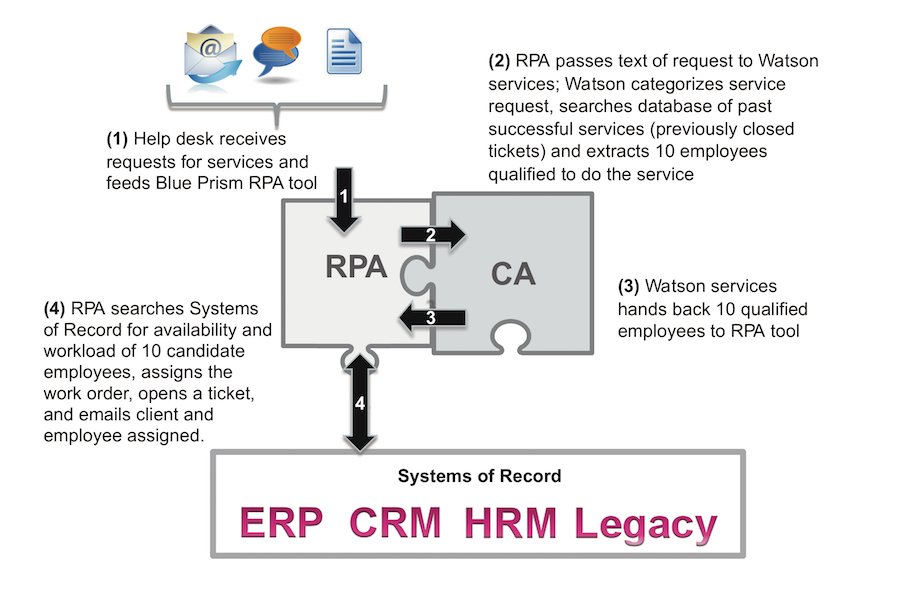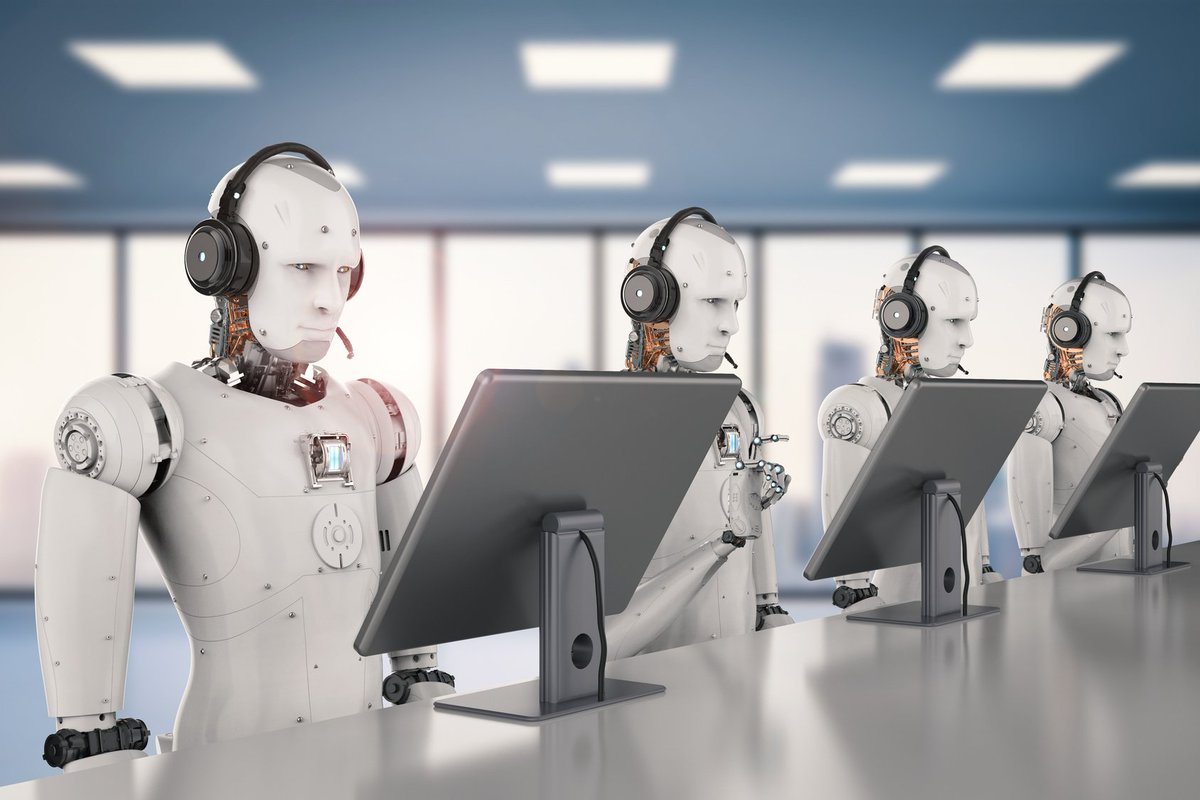We can report on one emerging trend as likely to become mainstream. From late 2016 and through 2017, we saw RPA and CA increasingly being used together as complementary technologies.
One example: IBM’s global IT outsourcing services business combined Blue Prism RPA software with components of IBM’s Watson technology. In one service area - Global Services Technology Innovation & Automation - IBM has well over one thousand customers, and a range of automation tools, including 200 RPA software licenses run out of London and Amsterdam.
Increasingly we have been seeing CA tools actually feed into RPA tools, especially in banking, insurance and financial service organizations. A bank, for example, will have an interactive chat bot at the front end in dialogue with customers, but will draw upon RPA to get the information it needs to be able to have a more fulfilling conversation with the end user, for instance about a stolen credit card.
One use is in email ticket triage. Customers have email task IDs with which they can send a support request to IBM. The request (e.g., “My printer is not working”, “I’ve forgotten my password”) needs to be routed to the correct resolver group. The RPA robot can get the request and log it into the ticketing system, but it does not understand the content of the email, and so cannot engage the relevant resolver team. Enter the CA tool, which receives the information from the RPA robot, and then, with a high degree of certainty (learned from reviewing historical tickets), can say, for example, “This is a network support request”, or “This is a telephony request”. The RPA robot can then assign the ticket to the correct resolver group.
A similar process can be used for more general unresolved requests collected by help desks coming in many forms, not just email. Customers could be having problems with storage, networks or databases, for example. The emails, text messages and telephone requests go into a pool of logged tickets. Each request will be quite specific and creates a dispatch problem. Who is best able to resolve the problem quickly? The RPA tool will bring Watson into play (see diagram below). This has been educated to categorize the service request, search the database of past successful services, and extract the top ten employees in the world able to fulfill the request. This ‘top ten’ is then returned to the RPA tool, which searches the systems of record for candidate availability, assigns the work, and then notifies the client and service agent.
An extension of this is to actually do the work with automation, using RPA and CA in tandem. For example, for a network support problem about opening firewall ports, Watson capabilities enable the service to be equipped with full instructions on what to do to open firewall ports. These instructions can be communicated to the requester, and, if needed, also to the resolution person. Alternatively Watson Natural Language Understanding can be used to extract what it needs from the ticket and then trigger the appropriate automation tooling to go and actually execute the resolution of the request – resolving the problem efficiently without human intervention, enabling support teams to focus on other critical issues.

Increasingly we have been seeing CA tools actually feed into RPA tools, especially in banking, insurance and financial service organizations. A bank, for example, will have an interactive chat bot at the front end in dialogue with customers, but will draw upon RPA to get the information it needs to be able to have a more fulfilling conversation with the end user, for instance about a stolen credit card. RPA will log on to legacy systems to discover the card details and personal and account details, and pass these to the chatbot. The conversation will end in decisions being made (e.g., card cancelled, new card issued), then the Watson solution will instruct the RPA tool to execute the requirement (e.g., stopping the credit card, issuing a letter to the customer, printing a new card, and updating the customer’s account). Thus RPA is used to fulfill at the back-end everything that the front-end has promised to the customer.
Swiss Post Solutions provides another example where a customer is ordering a high speed Internet, fixed telephone and cable television service. A cognitive automation tool collects, centrally, all incoming multi-channel data, extracts key information, then categorizes and prioritizes requests. These requests are then passed to internal RPA robots set up to interact with enterprise systems and delivers on the follow-up process (e.g., record customer and request; set up customer profile and number; create the contract; set up direct debit; check warehouse inventory; coordinate delivery dates; and pass exceptions to human agents to resolve. The multi-channel platform then, through automation tools, communicates decisions and validations, and makes personal contact through preferred channels to fulfill delivery.
These are just examples of many more we have seen currently – either operational or underway. While cognitive automation does different things from RPA, the two technologies can be highly synergistic; 2017 and early 2018 saw several organizations experimenting and being quite inventive about combining these technologies to optimize service performance.
You can read more about this case and many others in our new book: Robotic Process and Cognitive Automation – The Next Phase. Available from www.SBPublishing.org

